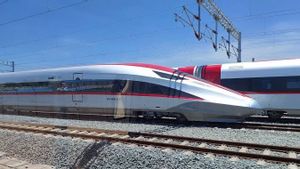YOGYAKARTA Of the many financial products currently available, credit cards and paylaters are products that help the community a lot. Both offer ways of paying in installments. But did you know the difference between credit cards and paylaters?
From its function, credit cards and paylaters have similarities, namely providing credit to users with predetermined limits. With these two financial services, users can make transactions without providing money first. Users can make payments according to schedule.
Meski memiliki cara kerja yang mirip, kartu kredit dan paylater tetap berbeda. Berikut ini perbedaan antara keduanya.
Quoted from the Bank Indonesia website, Credit Cards are Payment Equipment by Using Cards (APMK) that can be used to pay obligations that arise due to economic activities.
Meanwhile, paylaters are payment methods that provide installment facilities to the public without a credit card.
Another difference between a paylater and a credit card is in terms of technology. The use of a paylater applies a full digital system, while the credit card is not fully digital considering its use is still in the form of a card.
Paylater account creation does not require long and manual conditions. In fact, users can have a paylater account in a relatively short time. In contrast to credit cards where customers must meet some requirements that are not fully digital.
Usually credit cards are held by financial or banking companies. Even today, almost all banks provide credit card services with various advantages and disadvantages of each.
Meanwhile, paylaters are usually organized by e-commerce, marketplace, or digital companies engaged in financial services.
Credit cards provide a large loan limit. Even the payment limit can reach hundreds of billions. Limit credit cards are usually adjusted to the nominal salary of applicants. Unlike the paylater, the limit provided is not as big as the credit card.
Another difference is from the loan tenor or the loan period provided. The credit card loan tenor is longer than the parser. The tenor credit card can be 1 to 36 months, while the paylater is usually about 1 to 12 months.
The use of credit cards is wider so that it can be used on various shops and platforms, both domestic and foreign. In contrast to paylaters that can only be used in certain stores or predetermined platforms. In addition, paylaters can only be used domestically.
As the name suggests, credit cards are in the form of cards that must be stored in your wallet or bag. Meanwhile, the paylater does not have physical but is stored digitally in certain applications.
Usually, credit card issuers will provide special facilities for users of certain types of credit cards. For example, credit card holders get free airport lounge facilities, or points provided can be exchanged for special prizes. In contrast to paylaters that do not have this facility.
Promos available for credit cards are usually more than paylaters. For example, credit cards will get a 50 percent discount at certain stores in various branches. Meanwhile, the availability of promos on paylaters is only available on certain stores on predetermined platforms. In addition, promos given through paylater payments can be cashback or discounted prices.
To understand how the paylater works, visit our article on how the paylater works to better understand it.
Not only understanding the advantages and deficiencies of credit cards, the public is advised to know the advantages and disadvantages of paylaters as consideration.
In addition to differences in credit cards and paylaters, VOI.ID visits to get other interesting information.
The English, Chinese, Japanese, Arabic, and French versions are automatically generated by the AI. So there may still be inaccuracies in translating, please always see Indonesian as our main language. (system supported by DigitalSiber.id)













